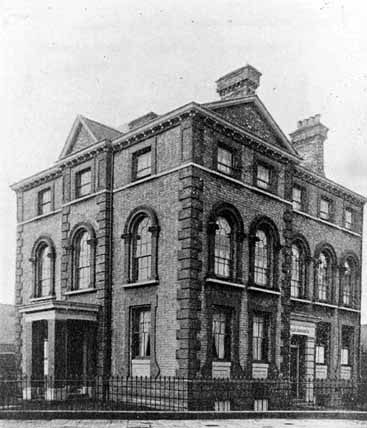Clarendon House Home For Girls, Hull
Clarendon House Home For Girls, HullHull, East Riding, Yorkshire (1892 - 1980s) Clarendon House Home for Girls was run by Hull Ladies' Association for the Care of Friendless Girls, before the Society took it over in 1892. The Home, situated off Spring Bank, accommodated only 14 girls, who were all under the care of Miss Beecham, the Matron. The layout of Clarendon House was typical for a children's home, and all available space was utilised. Many of the rooms were located in the basement - including the kitchen, scullery, larder, laundry and ironing-room. The dining-room was situated on the ground floor, along with the Matron's sitting-room and a wardrobe-room where the girls' Sunday best clothes were stored. The girls all slept in three large dormitories on the upper floor, where there was also a smaller bedroom, which was occupied by the Nurse and the Home's baby. The younger girls went to school on weekdays, with the older girls staying at home to learn domestic skills. On Saturdays the children over 10 years old helped with the housework, while the younger ones were taken for a walk. Tuesday evenings were set aside for Bible class and Wednesday night was recreation time, when the girls were allowed to sing or play. Friday evening was spent repairing clothes ready for church on Sunday. As Clarendon House was the only home in East Riding, plans were quickly made to expand the Home. In 1893 the Society bought some adjoining houses, which meant that it could now accommodate 30 girls. The demand to house girls in the Hull area continued to grow, eventually forcing the Society to look for new premises. A building site was acquired on Hessle High Road, and construction started in July 1914 when Edward Rudolph came to Hull to lay the foundation stone. All the costs were paid for by Mr Christopher Pickering, who was a prominent businessman in the Hull area. He built the Home as part of a group of buildings that is sometimes described as a 'model village'. The project included a church, a vicarage, almshouses (houses for the poor), a park and recreation ground as well as the children's home. The opening ceremony for the new house was held on 30 September 1915, with a dedication service conducted by the Bishop of York. From this date, the Home became known as the Pickering Home for Girls. In 1939 at the outbreak of the Second World War the girls were evacuated to Louth, and then to Duffield in 1943. Pickering Garth Home reopened after the war and by 1950 it was looking after boys as well as girls. The home closed in the 1980s. |




